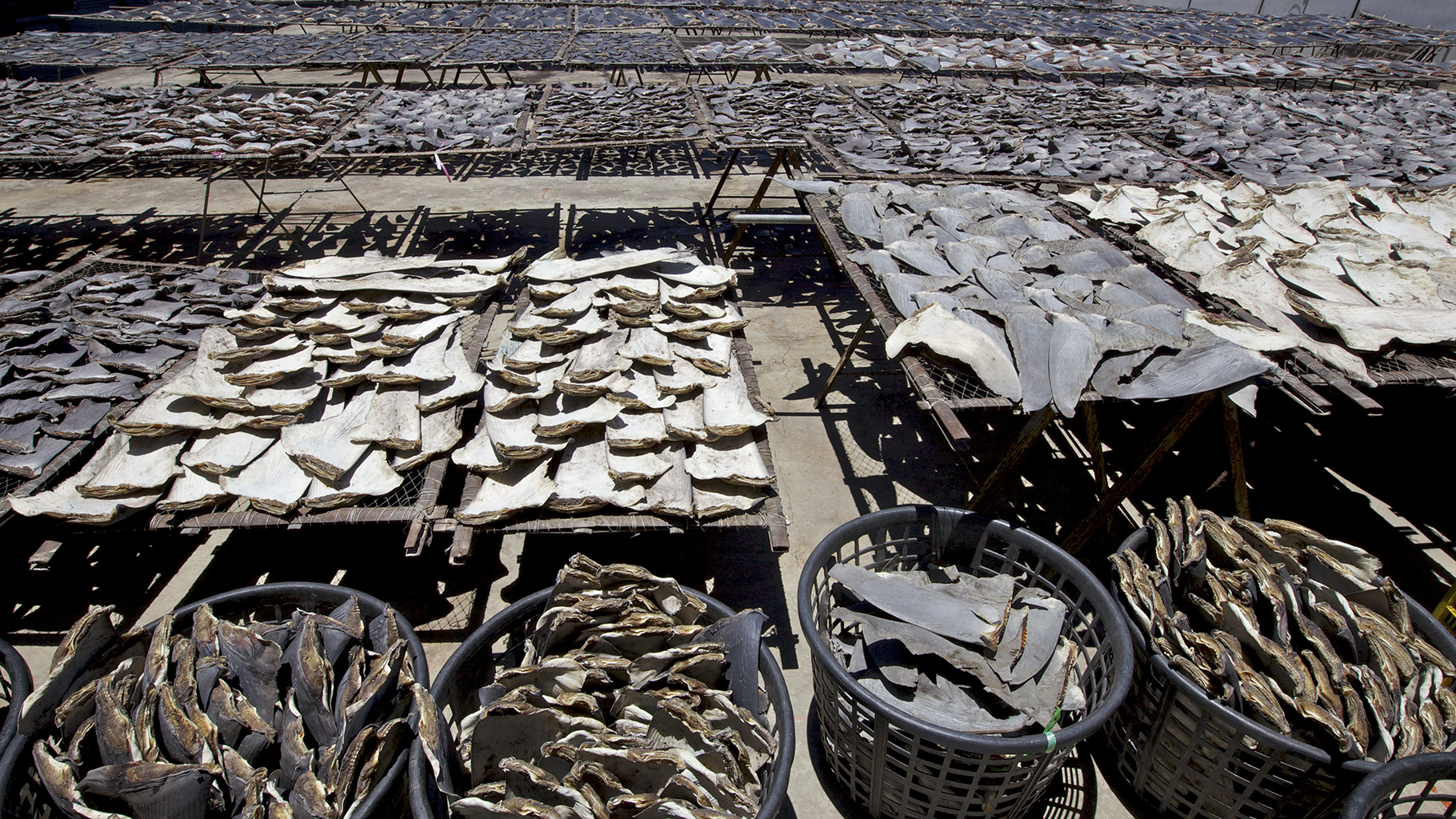How Shark Science Led to a Breakthrough in Trade Regulations
A decade of conservation changed a species’ image from villain to vulnerable

Science has often been the impetus for government action to protect sharks. That evidence has provided important information about the crucial role sharks play in the ecosystem, their value to ecotourism, and the decline of some populations that are being driven toward local extinction.
For example, two scientific findings helped convince delegates, in advance of the 16th meeting of the Conference of the Parties (CoP16) of the Convention on International Trade in Endangered Species of Wild Fauna and Flora (CITES), to list the first commonly traded shark species on CITES Appendix II in 2013. This means they can be traded internationally only if the trade is sustainable and does not cause detriment to them in the wild.
To dive deeper into how science drives policy, The Pew Charitable Trusts spoke to two shark experts. One is Boris Worm, a marine ecologist and Killam research professor at Dalhousie University in Nova Scotia, who co-authored the 2013 study revealing that an estimated 100 million sharks are killed every year in commercial fisheries. The other is Debra Abercrombie, a marine scientist and founder of the consulting firm Abercrombie & Fish, who developed a process that enables customs officials to visually identify CITES-listed shark fins.
Q: What led you to marine science, shark research in particular?
Boris Worm: I was always drawn to water—my parents say it was the first word I learned to speak. During my postdoc work, I became very aware of how sharks were suffering unsustainable mortality and that there was a real risk of species extinction, so I became active in this field.
Debra Abercrombie: I have been on the ocean or underneath the surface pretty much my entire life and fascinated by fish, especially sharks and rays. When I took an undergraduate shark biology field course at the Bimini Biological Field Station, I realized what I wanted to do with my life.
Q: Boris, what was the driving force behind the groundbreaking 100 million sharks paper, and what else did it accomplish?
Worm: It was very much motivated by an open question that the public had about the status of sharks: How bad is it? The paper really helped permeate public consciousness that we are killing large ocean animals at an unsustainable rate and that something should, and can, be done.
Q: The paper is still cited frequently in shark conservation work. What do you think will be the next impactful study in this area?
Worm: I think we need to find out whether all those new measures implemented are actually working to reduce mortality globally. We don’t know whether it’s really gotten better since 2010 or a whole lot worse.
Q: What would you say to young aspiring scientists who are committed to saving sharks?
Worm: Get good training in statistics and learn to make sense of all the data that is already out there but has not been used to the fullest extent to shed light on the plight of sharks and their roles in keeping the ocean ecosystem functional and resilient.
Q: Debra, what inspired your fin ID guides, which were the first to be widely available? How did you conclude shark fins were identifiable?
Abercrombie: The CITES CoP in Doha, Qatar, in 2010 inspired me to develop the guides. Countries opposed to listing commercially important shark species in Appendix II argued that it was time- and cost-prohibitive to do routine genetic testing on fins and that detached fins were not visually identifiable. Having seen hundreds of raw unprocessed fins, I knew that the fins from the species being proposed that year (oceanic whitetip, hammerhead, porbeagle) were extremely easy to identify to the species level.
Q: What work went into creating the guides? What methods do you use to collect and analyze these samples?
Abercrombie: I took photos and measurements of both wet and dried fins and assembled a collection of shark fins from a variety of species found in large numbers in international trade and representing various life stages. This allowed us to describe general morphological characteristics that can be used to rapidly identify fins from CITES-listed species amongst nonlisted species, which has been a game changer in shark conservation.
Q: These ID guides were groundbreaking, particularly leading into the CITES CoP in 2013, in proving one could identify fins in trade. What other effects have you seen from these guides?
Abercrombie: What was unexpected was the overwhelming positive response to the visual fin ID guide and how many people embraced the strategy as a CITES implementation tool. I have attended more than 50 CITES workshops around the world, including multiple trainings in Hong Kong that have helped customs officials there seize more than 5 metric tons of shark fins from 2014 through July 2018. Researchers in many countries have begun developing domestic and even regional ID materials to continue these unprecedented capacity-building efforts.
Q: What drives you to continue your shark conservation work?
Abercrombie: I have dedicated my life’s work to improving management strategies and conservation of sharks and rays. I have been fortunate to have been involved with so many fulfilling projects, and knowing that what I do makes a difference is what keeps me going.
KerriLynn Miller is an officer with Pew’s global shark conservation campaign.

















